Our beloved four-legged companions never fail to amaze us with their unique traits and behaviors.
One of the most iconic features of dogs is their wet nose—a characteristic that has puzzled and intrigued dog lovers for generations. Have you ever wondered why your furry friend’s nose is always slightly damp?
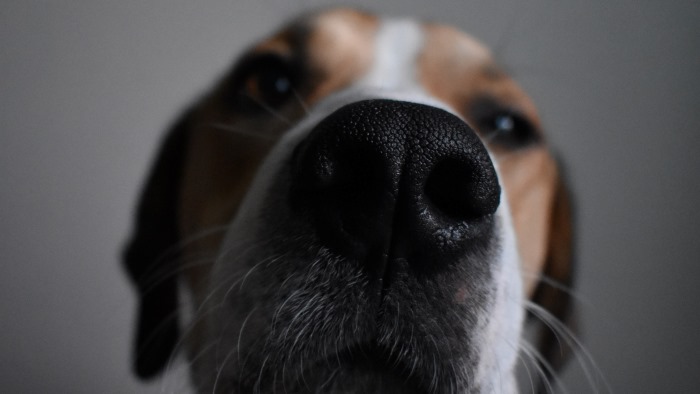
Join us as we embark on a journey into the fascinating world of canine biology to uncover the mysteries behind those delightfully wet noses.
Contents
The Anatomy of a Dog’s Nose
A dog’s nose could be a complex and interesting organ that permits them to identify and decipher a wide range of fragrances. A dog’s nose comprises a few parts, such as:
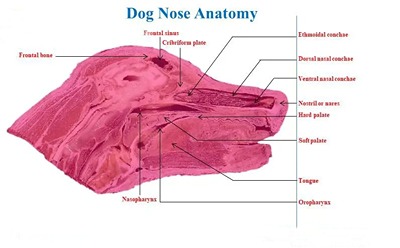
The nostrils
Air can enter and exit the nose through these holes. Dogs have two nostrils, each of which is equipped with a unique set of muscles that may expand or contract in order to regulate airflow.
Dogs can independently move each nose to do directional sniffing.
The nasal cavity
The nasal passageways, turbinates, and olfactory epithelium are all located in this area of the nose. The nasal septum is a thin wall that divides the nasal passageways into two chambers.
Bony projections called turbinates project into the nasal cavity and disturb the airflow.
Millions of olfactory receptors, which are specialized nerve cells that sense odor molecules, are found in the olfactory epithelium, a layer of tissue that covers the turbinates.
The rhinarium
“Nose leather” refers to the area of skin around the nostrils that is hairless. This surface is frequently wet from saliva[1] and mucus[2], which helps capture odor particles in the air.
Additionally, the rhinarium is home to sensory nerves that detect touch, humidity, and temperature.
The vomeronasal organ
Usually an extra olfactory organ that’s found over the roof of the mouth, behind the incisors.
This organ has a set of receptors that react to pheromones, which are chemical signals that pass on data around sex, age, wellbeing, and disposition
The vomeronasal organ[3] is associated with the nasal depression by two channels that open and close the incisors.
Is a Wet Nose a Sign of Good Health?
Many people believe that a wet nose is a sign of good health in dogs, while a dry nose indicates illness[4] or dehydration[5]. However, this is not always true.
A dog’s nose can change from wet to dry throughout the day, depending on various factors such as weather, activity level, sleeping habits, or medication.
A wet nose does not necessarily mean that your dog is healthy, just as a dry nose does not necessarily mean that your dog is sick.
However, there are some situations where a dog’s nose can indicate a health problem. For example:
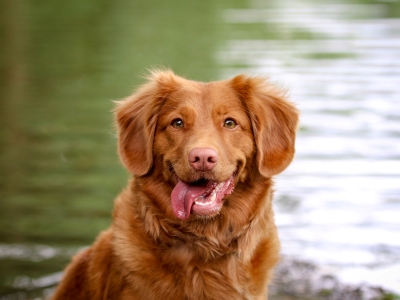
A nose that is too dry
If your dog’s nose is persistently dry and cracked, it could be a sign of dehydration, infection, allergy, sunburn, or autoimmune disease.
You should consult your veterinarian if you notice any abnormal changes in your dog’s nose texture or appearance.
A nose that is too wet
The extreme wetness and runniness of your dog’s nose might be an indication of nasal discharge[6], which can be brought on by a number of ailments including colds, allergies[7], infections, foreign bodies, tumors, or dental issues.
Inspect your dog’s nasal discharge carefully for any indications of blood, pus, or unpleasant odor, and seek veterinarian care if necessary.
A nose that changes color
It may indicate depigmentation or color loss if your dog’s nose turns pink or white instead of the regular pigment. Numerous things, including genetics, age, sun exposure, or immune–mediated illnesses, can contribute to this.
If your dog exhibits any symptoms of irritation, inflammation, or infection in the nose, you should keep an eye out for them and seek the advice of your veterinarian.
When Is a Wet Nose Normal?
A dog’s nose will go from moist to dry during the day, depending on a variety of variables including the weather, the dog’s activity level, hydration status, and sleeping patterns
Just as a dry nose is not evidence of a disease, a moist nose does not indicate excellent health.

Some situations where a dog’s nose might be wet are:
- After sniffing something interesting
- After drinking water
- After licking their nose
- After exercising
- When it’s humid or rainy
Some situations where a dog’s nose might be dry are:
- After sleeping or napping
- When it’s hot or sunny
- When they are dehydrated
- When they are stressed or anxious
- When they have allergies or a cold
When Is a Wet Nose Abnormal?
While a wet nose is usually normal and healthy for dogs, there are some cases where it might indicate an issue.
If your dog’s nose is excessively wet, dripping, or runny, it could be a sign of an infection, an injury, or a foreign object in the nose. Some common causes of abnormal nasal discharge in dogs are:
- Bacterial or fungal infections
- Viral infections such as canine distemper or kennel cough
- Parasites such as nasal mites or worms
- Allergic reactions to pollen, dust, or food
- Nasal tumors or polyps
- Dental problems such as abscesses or tooth decay
- Trauma to the nose from bites, scratches, or foreign objects
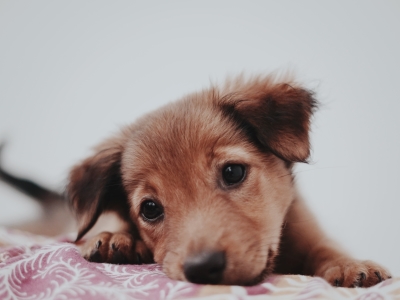
You should keep an eye out for additional signs including sneezing, coughing, wheezing, breathing issues, fever, lack of appetite, or lethargy if your dog’s nose is unusually wet.
Take your dog to the vet as soon as you can for a diagnosis and treatment if you detect any of these symptoms.
How to Care for Your Dog’s Nose
A dog’s nose is more than just a charming and idiosyncratic feature—it’s a crucial portion of their tactile world.
As much as we pay attention to our own wellbeing, it’s critical to guarantee that your textured friend’s nose remains in top-notch condition.
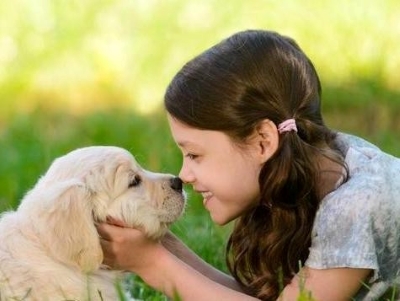
Here are some simple but successful tips to help you care for your dog’s nose and keep their sniffer in tip-top shape
- Keep your dog hydrated by providing fresh water at all times
- Avoid exposing your dog to extreme temperatures or harsh chemicals that could irritate their nose
- Check your dog’s nose regularly for any signs of injury, infection, or abnormal discharge
- Clean your dog’s nose gently with a damp cloth if it gets dirty or crusty
- Apply a natural moisturizer such as coconut oil or shea butter if your dog’s nose gets dry or cracked
- Consult your vet if you have any concerns about your dog’s nose or sense of smell
A wet nose is one of the many things that make dogs so adorable and unique.
By understanding why dogs have wet noses and how to care for them properly, you can help your pup enjoy their sniffing adventures and live a happy and healthy life.
FAQs
Is a wet nose always a sign of good health in dogs?
Whereas a wet nose can regularly show great wellbeing, other variables ought to be considered as well. In the event that you take note any unordinary changes in your dog’s behavior or by and large well-being, counsel a veterinarian.
Can I use regular human moisturizer on my dog’s nose?
It’s best to use pet-safe products specifically formulated for dogs. Human moisturizers may contain ingredients that are harmful if ingested by your furry friend.
Can my dog’s nose change color over time?
Yes, a dog’s nose color can change due to various factors, including environmental conditions and age. While color changes are generally normal, sudden or significant changes should be discussed with a veterinarian.
Do all dog breeds have wet noses?
Yes, the larger part of pooch breeds have sodden noses due to the nearness of mucous organs. Be that as it may, the level of dampness and the particular surface of the nose can change between breeds.
Are there specific dog breeds with drier noses?
Some dog breeds may have noticeably drier noses, especially those with shorter snouts. However, frequent inspection and good maintenance can assist in preserving a healthy amount of moisture.
Conclusion
In conclusion, a dog’s moist nose is a helpful and natural characteristic that aids in better smelling, controlling body temperature, and expressing emotions.
Both a moist and a dry nose might indicate problems, but neither is usually indicative of good health.
You should periodically check your dog’s nose as a responsible dog owner and contact your veterinarian if you see any unusual changes or symptoms.
You can make sure that your dog has a happy and healthy life by taking proper care of their nose.
Reference:
- Dog Saliva: 9 Facts You Should Know | PetMD
- Mucus in Dog Poop: Causes and How to Treat It | Great Pet Care
- The dog vomeronasal organ: A review | ResearchGate
- TEN MOST COMMON ILLNESSES IN DOGS | New Life K9
- Warning Signs of Dehydration in Dogs | The American Kennel Club
- Dog Nose Discharge: Common Causes and Treatments | WedMD
- Allergies in Dogs | VCA Hospital

Dania is a dog groomer living in California, who loves styling dogs. She often uses dog accessories to keep them distracted while grooming. She is also a dog parent to a Pomeranian, Duke. It’s because of him she is always on a lookout for the best dog foods, toys, other dog accessories, and ways to keep him equipped, healthy and happy.

